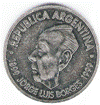Modern Languages and Literatures, Department of

Spanish Language and Literature Papers
Document Type
Article
Date of this Version
January 2003
Abstract
When we think of realism in fiction, we think first of mimesis—the imitation of life—a concept that at once implies the existence of something outside the writer’s own mind which he or she is trying to imitate. The imitation of this supposedly external “thing” undergirds the term “realism,” whether applied to painting, philosophy, literature, or film. As Harry Levin reminds us, “Etymologically, realism is thing-ism. The adjective ‘real’ derives from the Latin res [meaning ‘thing’] and finds an appropriate context in ‘real estate’”—land, property, things. The realist novel in Spain places a special emphasis on this primary engagement with the things of this world. In this emphasis, nineteenth-century Spanish realism harks back even to the epic Poema de Mío Cid (1140), in which a close-up focus on things—cages laid bare, emptied of hunting falcons, weeds growing on the threshold of an abandoned castle— participates vividly in telling the story of exile.
Writing in this realist tradition, Benito Pérez Galdós (1843–1920), in his 1870 essay on the art of the novel, first evokes the principle of mimesis. His stated aim is to reproduce life as objectively as possible, depicting things as they “really” are —houses, dress, furniture, gestures, and habits of speech. In a later essay (1897) he affirms that language itself constitutes the most telling sign of personal and national identity. Similarly Leopoldo Alas (1852–1901), known by his pen name Clarín, advocates the idea of the novel as a “reproduction” based on close observation and documentary evidence, on “scrupulously examined details.” The trope of the mirror expresses the mimesis of this visible, external reality. Galdós speaks of the contemporary social novel as a “faithful mirror of the society in which we live.” Clarín reiterates the notion of the naturalist novel as “the exact reflection of life.”
We find, particularly in the novels of Galdós and Clarín, a reinvented notion of the Quixotic: people inevitably become, in part, the images they make for themselves. It is this perception about human behavior that each writer captures as they mirror the uncertainties of the economic, political, and social life of their times. While the question of dualism, of image and reality persists unresolved in theory, it is ever alive in the mediation that takes place between text and world in the nineteenth-century Spanish realist novel.


Comments
Published in The Cambridge Companion to the Spanish Novel from 1600 to the Present, ed. Harriet Turner and Adelaida López y Martínez (Cambridge University Press, 2003), pp. 81–101. Copyright © 2003 Cambridge University Press. Used by permission.